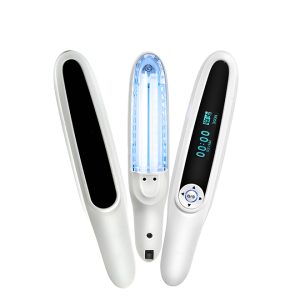Description
Quick Details
Real-time Quantitative PCR Detection System thermal cycler MSLPCR02 Features
1.48 samples
2.Easy-to-use Software
3.Various Operation modes
4.Advantange Temperature Control
5.Non-Maintenance Optical Systems
6.Sensitive and Precise Thermoelectric Systems
7.Particular Momentary Power Failure Protection
Packaging & Delivery
| Packaging detail:Standard export package Delivery detail:within 7-10 workdays after receipt of payment |
Specifications
Real-time Quantitative PCR Detection System thermal cycler MSLPCR02
Key Features
1.48 samples
2.Easy-to-use Software
3.Various Operation modes
4.Advantange Temperature Control
5.Non-Maintenance Optical Systems
6.Sensitive and Precise Thermoelectric Systems
7.Particular Momentary Power Failure Protection

Real-time Quantitative PCR Detection System thermal cycler MSLPCR02 Specifications
Thermal Block
Block formats 48-well
Sample volume 10–100 μL
Consumables Thick-walled 0.2ml PCR tibes, 0.1ml 8-strip tubes
Max heating/cooling rate 3.0°C/sec/ 2.0°C/sec
Temperature range 4.0–99.0°C
Temperature accuracy ±0.1??
Temperature uniformity ±0.3°C
Temperature steps 1-99
Heated lid
Temperature range 100–120°C

Real-time Quantitative PCR Detection System thermal cycler MSLPCR02
Optics
Excitation 2 LEDs
Excitation range 470–523 nm
Detector PMT
Detection range 525–564 nm
Detection channels:
Channel Excitation (nm) Emission (nm) Pre-Calibrated Dyes
1. 470 525 FAM, SYBR Green I
2. 523 564 VIC, HEX, TET, JOE
Detection range 101-1010 copies
Software
Analysis modes: Absolute quantification, Relative quantification, Melt curve analysis,
Performance
Reproducibility CV≤2.1??
Correlation coefficient of nucleic acid precision R≥0.997
Real-time Quantitative PCR Detection System thermal cycler MSLPCR02 System
Operating systems Windows XP,Windows 7
Communication USB
Power usage AC220 × (1±10%)V, 50 × (1±2%)Hz
Dimensions 520W×420D×320H mm
Weight 27kg
Which real-time or digital PCR system is right for you?
To understand why traditional PCR is limited, it is important to understand what happens during the PCR reaction. A basic PCR run can be divided into three phases:
Index period
Accumulated product exactly doubles with each cycle (assuming 100% reaction efficiency). The reaction is highly specific and precise. Exponential amplification occurs because all reagents are freshly available and the kinetics of the reaction drive the reaction in favor of amplicon doubling.
Linear phase (high variability)
As the reaction continues, some reagents are consumed by amplification. The reaction starts to slow down, and the PCR product no longer doubles with each cycle.
Plateau (endpoint: gel detection using conventional methods)
The reaction stops, no more product is produced, and if left long enough, the PCR product will start to degrade. Because each sample has different reaction kinetics, each tube or reaction will plateau at a different time point. These differences can be seen during the plateau. During the plateau period, conventional PCR performs the measurement, also known as endpoint detection.
Variation in plateau measurements with conventional PCR
Three replicate samples had the same amount of DNA at the start of the reaction and different amounts of PCR product during the plateau phase of the reaction (due to changes in reaction kinetics). Therefore, it will be more accurate to make measurements during the exponential period, where replicate samples expand exponentially.
Real-time PCR measures during exponential phase for more accurate quantitation
Real-time PCR focuses on the exponential phase because it provides more precise data for quantification. During the exponential period, the real-time PCR instrument calculates two values. The threshold line is the level of detection at which the fluorescence intensity of the reaction exceeds background. The PCR cycle at which the sample reaches this level is called the cycle threshold (Ct). Ct values are used for downstream quantification or presence/absence detection. By comparing the Ct values of a sample of unknown concentration with a series of standards, the amount of template DNA in an unknown reaction can be accurately determined.
Digital PCR counts individual molecules for absolute quantification
Digital PCR works by splitting the sample into many individual real-time PCR reactions; some of these reactions contain the molecule of interest (positive) and others do not (negative). After PCR analysis, a fraction of the negative results are used to generate absolute results for the exact amount of target molecule in the sample without the need for reference standards or endogenous controls.
MedsinglongPCR system, from kits, instruments, enzymes, master mixes, reagents, optical cartridges, plastic accessories, spare parts to software etc. Medsinglong real-time quantitative PCR system is a fully integrated quantitative PCR amplification, detection and data analysis system. Medsinglong increases productivity with its unique modular and flexible design, intuitive touch screen interface, advanced and easy-to-use reporting system, and monitors more than 120 attributes through built-in online diagnostic system, so that when analytical problems or instrument problems arise find out the reason.









There are no reviews yet.